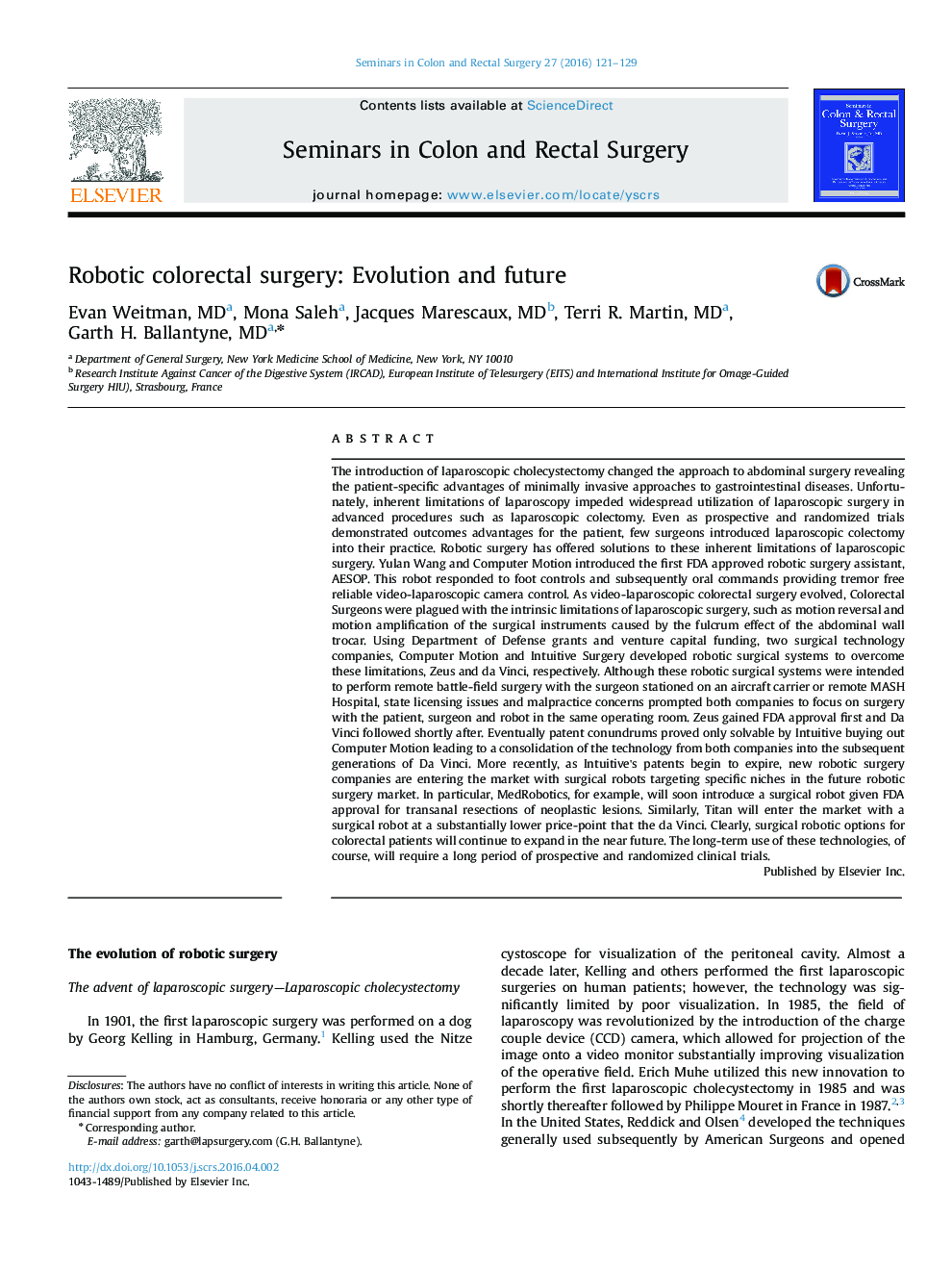| کد مقاله | کد نشریه | سال انتشار | مقاله انگلیسی | نسخه تمام متن |
|---|---|---|---|---|
| 3319162 | 1407544 | 2016 | 9 صفحه PDF | دانلود رایگان |
The introduction of laparoscopic cholecystectomy changed the approach to abdominal surgery revealing the patient-specific advantages of minimally invasive approaches to gastrointestinal diseases. Unfortunately, inherent limitations of laparoscopy impeded widespread utilization of laparoscopic surgery in advanced procedures such as laparoscopic colectomy. Even as prospective and randomized trials demonstrated outcomes advantages for the patient, few surgeons introduced laparoscopic colectomy into their practice. Robotic surgery has offered solutions to these inherent limitations of laparoscopic surgery. Yulan Wang and Computer Motion introduced the first FDA approved robotic surgery assistant, AESOP. This robot responded to foot controls and subsequently oral commands providing tremor free reliable video-laparoscopic camera control. As video-laparoscopic colorectal surgery evolved, Colorectal Surgeons were plagued with the intrinsic limitations of laparoscopic surgery, such as motion reversal and motion amplification of the surgical instruments caused by the fulcrum effect of the abdominal wall trocar. Using Department of Defense grants and venture capital funding, two surgical technology companies, Computer Motion and Intuitive Surgery developed robotic surgical systems to overcome these limitations, Zeus and da Vinci, respectively. Although these robotic surgical systems were intended to perform remote battle-field surgery with the surgeon stationed on an aircraft carrier or remote MASH Hospital, state licensing issues and malpractice concerns prompted both companies to focus on surgery with the patient, surgeon and robot in the same operating room. Zeus gained FDA approval first and Da Vinci followed shortly after. Eventually patent conundrums proved only solvable by Intuitive buying out Computer Motion leading to a consolidation of the technology from both companies into the subsequent generations of Da Vinci. More recently, as Intuitive׳s patents begin to expire, new robotic surgery companies are entering the market with surgical robots targeting specific niches in the future robotic surgery market. In particular, MedRobotics, for example, will soon introduce a surgical robot given FDA approval for transanal resections of neoplastic lesions. Similarly, Titan will enter the market with a surgical robot at a substantially lower price-point that the da Vinci. Clearly, surgical robotic options for colorectal patients will continue to expand in the near future. The long-term use of these technologies, of course, will require a long period of prospective and randomized clinical trials.
Journal: Seminars in Colon and Rectal Surgery - Volume 27, Issue 3, September 2016, Pages 121–129
